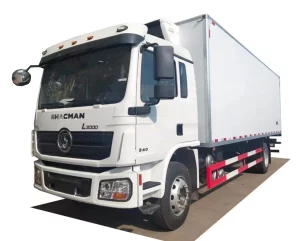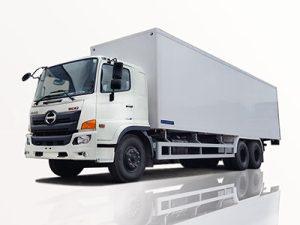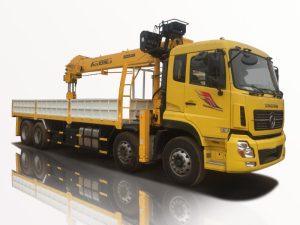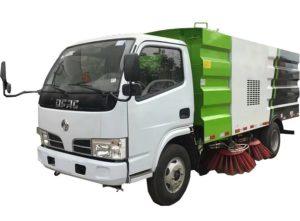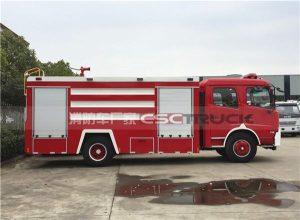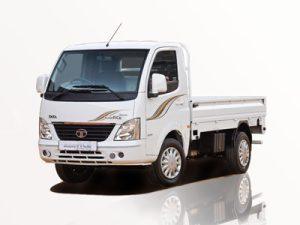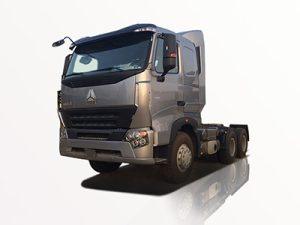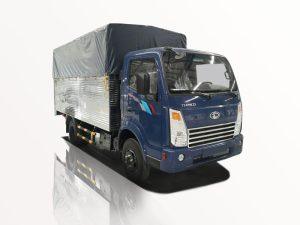Monday to Saturday - 8:00 -17:30
Understanding Garbage Disposal Trucks: Essential Insights and Practical Tips
The evolution of waste management has led to the emergence of specialized vehicles designed for efficient garbage collection and disposal. Among these vehicles, garbage disposal trucks play a vital role in maintaining public hygiene and managing municipal waste. This article delves into various aspects of garbage disposal trucks, focusing on their types, components, operational processes, benefits, and practical tips for effective waste management. Whether you are a waste management professional, a municipal planner, or an environmentally-conscious citizen, understanding garbage disposal trucks can significantly enhance your knowledge of waste management systems.
What is a Garbage Disposal Truck?
A garbage disposal truck is a specialized vehicle designed for the collection and transport of waste materials from residential, commercial, and industrial areas to disposal or recycling facilities. These trucks are equipped with advanced technology to facilitate the efficient collection, compaction, and transportation of waste, ensuring cleanliness and environmental safety.
Key Features of Garbage Disposal Trucks
- Compaction System: Most garbage disposal trucks are equipped with a compaction system that compresses waste to maximize load capacity and minimize trips to disposal sites.
- Loading Mechanism: Common loading mechanisms include rear loaders, front loaders, and side loaders, each designed for different waste collection strategies.
- Safety Features: Safety is paramount in garbage disposal operations. Trucks are often equipped with safety lights, alarms, and cameras to enhance operational safety.
- Environmental Considerations: Many modern trucks are designed to minimize emissions and noise, contributing to cleaner urban environments.
Types of Garbage Disposal Trucks
Garbage disposal trucks come in various types, each tailored for specific waste collection needs. Here are the primary categories:
1. Rear Loader Trucks
These trucks are equipped with a loading mechanism at the rear. Workers manually load garbage into the compactor, making rear loaders ideal for residential areas with narrow streets.
2. Front Loader Trucks
Front loader trucks use a hydraulic arm to lift and dump bins placed in front of the vehicle. These trucks are suitable for commercial waste collections where large containers are used.
3. Side Loader Trucks
Equipped with a side-loading mechanism, these trucks can automate the garbage collection process by using robotic arms to pick up bins located at the curb.
4. Automated Refuse Collection Vehicles (ARCV)
ARCV trucks are fully automated and can collect waste without the need for human intervention. These vehicles are equipped with advanced sensor systems and robotic arms for efficient waste collection.
5. Specialized Waste Collection Trucks
Some garbage trucks are designed for specific waste types, such as recycling trucks, organic waste trucks, or hazardous waste collection vehicles, focusing on environmentally safe disposal methods.
Components of a Garbage Disposal Truck
Understanding the components of a garbage disposal truck helps clarify how these vehicles operate. Below is a breakdown of essential components:
1. Chassis
The chassis is the vehicle’s foundation, bearing the weight of other components and providing structural integrity.
2. Compaction Chamber
The compaction chamber compresses waste material to maximize capacity. The compacted waste is crucial for efficient transport and reduced environmental impact.
3. Load Mechanism
The load mechanism can be manual or automated, facilitating the collection process based on truck design. It determines how effectively waste is loaded into the truck.
4. Hydraulic System
The hydraulic system powers the loading and compaction mechanisms, ensuring smooth operation during waste collection.
5. Control Panel
The control panel allows operators to manage and monitor the truck’s various functions, enhancing operational efficiency and safety.
Operational Processes of Garbage Disposal Trucks
Garbage disposal trucks follow a systematic process for waste collection and disposal. Understanding these steps can improve efficiency and effectiveness in waste management:
1. Route Planning
Effective waste collection starts with careful route planning. Garbage collection routes are designed to minimize travel times and maximize operational efficiency, often utilizing GPS technology.
2. Identification of Collection Points
Collection points, such as residential neighborhoods or commercial areas, are designated based on the waste generation patterns of the community.
3. Waste Collection
Trucks arrive at the designated points at scheduled times, where workers or automated systems collect waste from bins and containers.
4. Compaction and Load Management
Once the waste is collected, it is loaded into the compaction chamber, where it is compacted to optimize space and reduce the number of trips required to the landfill.
5. Transportation to Disposal Facilities
After the waste is compacted, the truck transports it to disposal facilities, such as landfills or recycling centers, where it can be processed appropriately.
6. Cleaning and Maintenance
Regular cleaning and maintenance schedules are crucial to keep garbage disposal trucks in optimal condition and prevent contamination and odors. Operators should follow a strict cleaning regime after each collection route.
Benefits of Using Garbage Disposal Trucks
Garbage disposal trucks offer several advantages for urban waste management:
1. Improved Hygiene and Sanitation
The timely collection and transport of waste help maintain cleanliness in urban areas, reducing health risks associated with unmanaged waste.
2. Efficient Waste Management
Trucks enhance the efficiency of waste management practices by ensuring that waste is collected, compacted, and transported quickly and effectively.
3. Environmental Protection
Modern garbage disposal trucks are designed with eco-friendly technologies to reduce emissions, contributing to cleaner air quality in urban settings.
4. Cost-Effectiveness
Efficient collection and transportation of waste lead to reduced operational costs for municipalities and waste management companies.
Challenges Faced by Garbage Disposal Trucks
While garbage disposal trucks are essential for effective waste management, they also encounter several challenges:
1. Traffic Congestion
Garbage trucks often operate in urban areas with heavy traffic, which can lead to delays and inefficiencies in waste collection.
2. Maintenance Costs
Regular maintenance and unexpected repairs can incur significant expenses, affecting the operational budget of waste management services.
3. Operator Safety
Operators work in potentially dangerous environments while collecting waste, making safety protocols and training critical to prevent accidents.
Tips for Enhanced Waste Management with Garbage Disposal Trucks
For effective use of garbage disposal trucks, consider these practical strategies:
1. Schedule Regular Collections
Establish consistent collection schedules to prevent overflow and ensure timely waste removal from properties.
2. Utilize Technology
Incorporate GPS and route optimization software to improve collection efficiencies and reduce travel time.
3. Educate the Community
Implement community outreach programs to educate residents about proper waste disposal practices, which can reduce contamination and increase recycling rates.
4. Maintain Trucks Regularly
Regular inspections and maintenance are crucial for the operational efficiency and safety of garbage disposal trucks. Implement a robust maintenance schedule.
Frequently Asked Questions (FAQs)
1. How often do garbage disposal trucks collect waste?
The frequency of waste collection varies by municipality and neighborhood but is typically scheduled weekly or bi-weekly.
2. What types of waste can be collected by garbage disposal trucks?
Most garbage disposal trucks can collect general municipal waste, recycling, and organic waste, although specialized trucks may be required for hazardous waste.
3. How is waste sorted once it reaches the disposal facility?
At the disposal facility, waste is sorted at recycling centers, where materials are separated for recycling, composting, or disposal in landfills.
4. What safety measures are in place for garbage truck operators?
Operators are trained in safety protocols, wear protective gear, and use safety features on the trucks to mitigate hazards while on the job.
5. Can I put hazardous waste in my regular trash?
No, hazardous waste should not be disposed of in regular trash. Many municipalities have special collection days or facilities for hazardous waste.
6. What role do garbage disposal trucks play in recycling efforts?
Garbage disposal trucks equipped for recycling can collect recyclables separately from general waste, facilitating the recycling process and reducing landfill volumes.
Conclusion
Understanding garbage disposal trucks is critical for those involved in waste management and the broader community. By acknowledging the various types, components, benefits, challenges, and best practices associated with these vehicles, stakeholders can enhance the efficiency of waste management systems, promote public health, and contribute to environmental sustainability.


